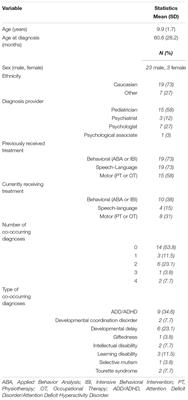SYSTEMATIC REVIEW
Published on 13 Feb 2019
Scoping Review: Physical Activity and Social Functioning in Young People With Autism Spectrum Disorder

doi 10.3389/fpsyg.2019.00120
- 28,650 views
- 53 citations
19k
Total downloads
92k
Total views and downloads
SYSTEMATIC REVIEW
Published on 13 Feb 2019

ORIGINAL RESEARCH
Published on 17 Jan 2019

BRIEF RESEARCH REPORT
Published on 11 Jan 2019

ORIGINAL RESEARCH
Published on 09 Jan 2019

ORIGINAL RESEARCH
Published on 11 Dec 2018

ORIGINAL RESEARCH
Published on 27 Nov 2018

ORIGINAL RESEARCH
Published on 31 Jul 2018
